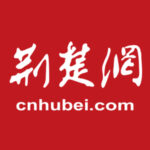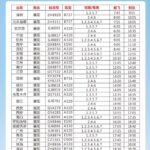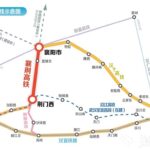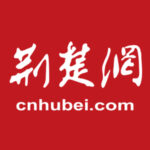On the evening of September 12, the 2025 Yangtze River Culture and Arts Festival grandly opened in Wuhan.
Culture leads development, creating a vibrant atmosphere across the region. A press conference on cultural leadership was held, presenting Hubei’s cultural development achievements: During the “14th Five-Year Plan” period, Hubei has made solid progress in building a culturally strong province, with cultural undertakings and industries “driven by dual engines,” injecting strong spiritual and cultural power into regional development.
Cultural Industry Advances in Both Scale and Quality, Accelerating Formation of New Productive Forces
During the “14th Five-Year Plan” period, three core indicators for Hubei’s cultural sector—revenue of cultural enterprises above designated size, value-added of cultural and related industries, and revenue from new cultural business formats—all ranked first among central Chinese provinces.
A series of key data points confirm this overall leap: Revenue of cultural enterprises above designated size grew from 379.6 billion yuan to 535.5 billion yuan, crossing the 400 billion and 500 billion yuan thresholds consecutively, maintaining the top position in central China; value-added of cultural and related industries rose from 172.2 billion yuan at the end of the “13th Five-Year Plan” period to 275 billion yuan by the end of 2023, ranking first in central China; revenue from new cultural business formats in cultural enterprises above designated size increased from 102.7 billion yuan at the end of the “13th Five-Year Plan” period to 196.3 billion yuan in 2024, achieving “four consecutive years of growth” and continuing to lead central China.
The “secret” to this leap is attributed to three aspects: continuously creating a market-oriented, law-based, and internationalized business environment, effectively carrying out enterprise assistance activities to “solve problems, stabilize growth, and promote development,” unleashing market vitality; implementing a strategy to enhance industrial capacity, learning from advanced experiences, identifying gaps, leveraging advantages, addressing weaknesses, strengthening leading enterprises, and optimizing the ecosystem, promoting continuous scaling of the cultural industry; fully utilizing the advantages of being a major province in science and education, focusing on technological empowerment and cultural enrichment, and accelerating the development of new cultural productive forces.
Moving forward, Hubei will deeply implement cultural innovation strategies, accelerate the “three-pronged approach” of upgrading traditional cultural industries, expanding new cultural industries, and cultivating future cultural industries, striving to build a culturally strong province.
“Hubei, Home of Friends” Gains National Recognition, “Poetry and Distance” Shine Together
Cultural performances and attractions across the region have attracted crowds of tourists. Hubei has deeply implemented cultural innovation strategies, guided by “five golden name cards,” integrating core cultural and tourism resources across the province, launching two major cultural and tourism axes, igniting enthusiasm among domestic and international visitors.
To make Hubei’s natural beauty and cultural charm known to more people, this year Hubei launched the “Hubei, Home of Friends” global promotion plan, continuously optimizing tourist source structures, enhancing Hubei tourism’s visibility and competitiveness in the international market. The province has established social media matrices and launched international platforms. It has successively hosted cultural and tourism industry expos, international martial arts conferences, global travel trade conferences, marathons, tennis tournaments and other festivals and competitions, continuously promoting the integration of cultural and tourism chains, expanding “tourism plus various industries,” vigorously developing new formats such as leisure vacations, low-altitude tourism, digital tourism, summer retreats, winter sports, and performances, building a complete industrial chain covering “dining, accommodation, transportation, travel, shopping, and entertainment.”
As a “national cultural living room” and one of the first nationally key museums jointly built by central and local governments, Hubei Provincial Museum’s international influence continues to grow, ranking sixth in national museum network influence and among the top global attractions. In the future, the museum will continue to build the Zenghouyi Chime Bells international cultural brand, promote the application of Yunmeng Qin Bamboo Slips for World Memory Heritage status, deeply engage in international exchange and cooperation, contributing Hubei’s strength to promoting mutual learning among human civilizations.
During the “15th Five-Year Plan” period, Hubei will systematically plan, innovate promotion strategies and market development, promote “Hubei culture going global,” attract “tourists from five continents to gather in Hubei,” and accelerate the construction of a world-renowned cultural tourism destination.
Moral Stars Shine Nationally, “Three Major Spirits” Nourish the Region
The flowers of civilization bloom across the region. During the “14th Five-Year Plan” period, H





